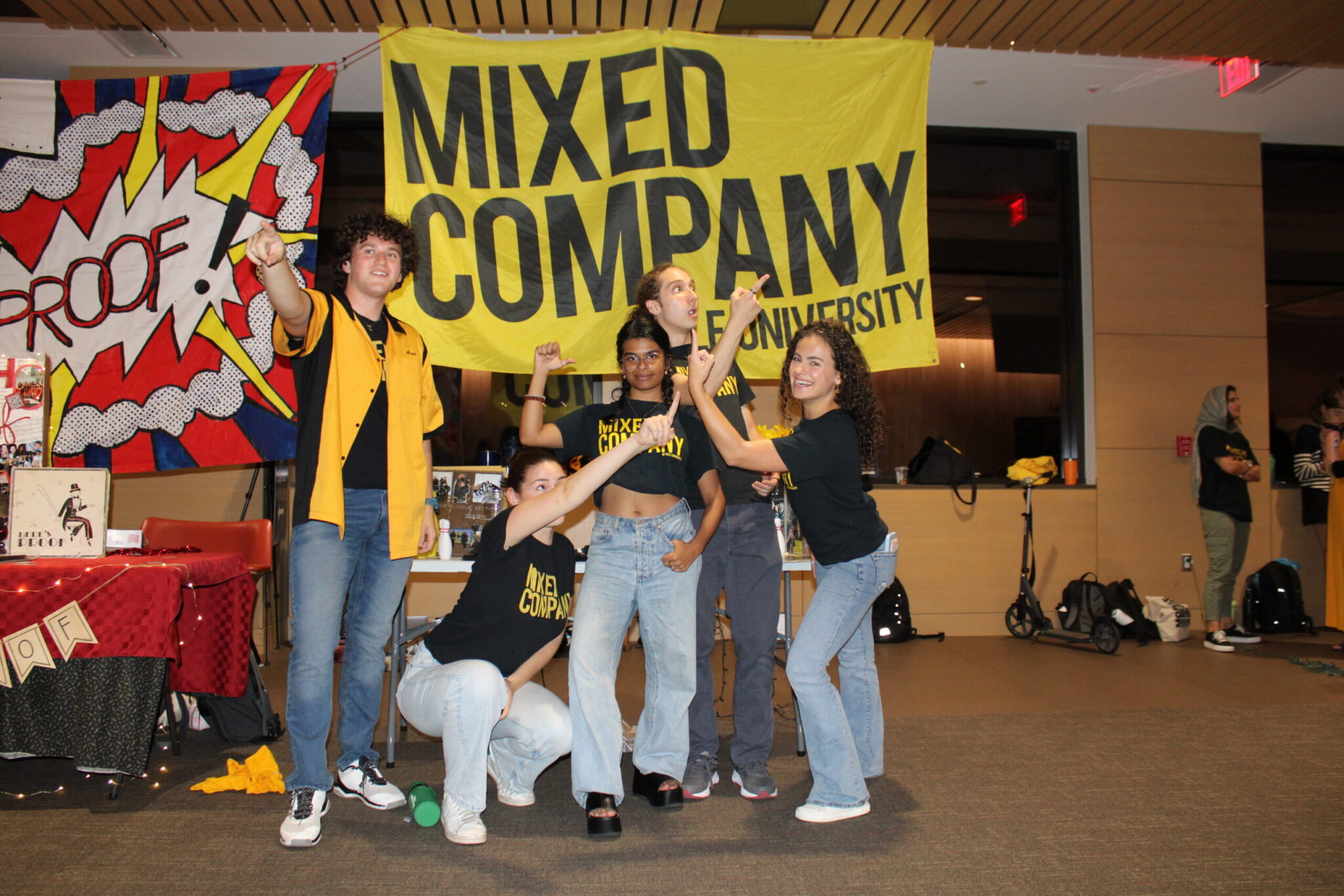A cappella rush starts on a high note
The official two-week a cappella rush process is now underway following this weekend’s Woolsey and Marsh Jams.

Collyn Robinson, Staff Photographer
Yale’s a cappella community kicked off its two-week rush process this weekend with the annual Woolsey Jam on Saturday and Marsh Jam on Monday.
The University’s 17 undergraduate a cappella groups — sans senior-only groups Whim ‘n Rhythm and Whiffenpoofs — performed one song each at Woolsey Jam and two songs each at Marsh Jam.
During the jams, members also discussed what sets their groups apart from others and organized audition sign-ups for later this week.
The performances involved one or more soloists, four-part harmony and beatboxing. Some groups, such as the Society of Orpheus and Bacchus and the Spizzwinks(?), incorporated skits and dialogue into their songs.
The end of the Marsh Jam marked the official start of rush, which involves auditions, callbacks, singing desserts — hour-long concerts by individual groups — and rush meals. The process culminates in tap night on Sept. 20, during which some rushees will be officially inducted into the groups.
“[Shades of Yale is] obviously catered toward African-American students, and I think it’s really important I’m a part of those [types of] groups because that’s a significant aspect of my identity,” said Ayannah Obas ’27, who came into the rush process with her eyes set on the a cappella group, which emphasizes music of the African diaspora. “Being a part of that group … would just [put] me in a space where I feel comfortable at Yale.”
However, after attending both jams, Obas was impressed by the other groups’ sheer talent and tight-knit bonds. Ultimately, she signed up to audition for five a cappella groups, including Shades of Yale.
During the jams, there were some technical issues that posed challenges for both the groups and their prospective rushees. Former Head Rush Manager of Mixed Company Ivana Ramirez ’25 highlighted the difficulty of performing in Woolsey Hall due to the space’s layout.
“The echo delay … makes it really difficult to hear each other, and the design of the room also means that music tends to go very flat,” she said. “We have to be very in tune with each other, both literally and also in a mental capacity.”
Woolsey Hall was constructed with ideal acoustics for organ performances. However, this causes choral performances to have excessive resonance and impedes performers’ ability to hear themselves sing.
Cyrus Rivers ’27, a rushee, also noted the drawbacks of holding the first jam in Woolsey Hall.
“It’s a tough space to do a cappella because it muddles the sound a little bit,” he said. “It was hard to judge the sound of a lot of groups based on that location.”
Other first-year students cited initial hesitation to rush because of the apparent intensity of the groups’ selection processes. Both Nneka Moweta ’27 and Kyle Sheng ’27 described rush as a “scary” process on account of the word’s typical association with Greek life.
Some students who lacked high school performing arts and singing experience felt especially intimidated about rushing a cappella. Most auditions include a pitch-matching component, and some callbacks involve a sight-singing exercise, both of which can be challenging for untrained singers.
“Are they going to use this as a plus or minus when they’re deliberating about me?” Shades of Yale’s Co-Head Rush Manager Tobias Exsted ’26 said, recalling his anxiety during his rush process in fall 2022. “Should I bring up my lack of experience? Is that going to be something that hurts me?”
Yale’s Singing Group Council, which consists of four upperclassmen a cappella members, oversees the rush process. The SGC aims to ensure that all rushees receive the support they need to make it through the chaos of rush, according to SGC Co-Chair Abigail Yadegar ’25.
Each year, the SGC creates a handbook that all groups must follow in order to make the rush process as consistent as possible.
Both Exsted and Yadegar noted that in previous years, the rush process fostered a cutthroat and competitive environment. They described some groups undercutting each other in hopes of securing the most talented first-year students as members.
However, the SGC has made several recent changes that have aimed to make rush a more inclusive and friendly process.
One such change requires groups to maintain consistent rush budgets, which govern expenses like callback gifts for rushees.
“These changes … ensure that every group has a fair shot during rush, regardless of their financial background,” Yadegar wrote to the News.
This rule was created because some of the older, well-established groups have far greater endowments and budgets than newer groups. For instance, the century-old Spizzwinks(?) cover all members’ travel and lodging costs during their quarterly tours.
Additionally, last year’s SGC eliminated gender-based descriptions for groups, instead requiring groups to identify themselves by vocal parts — such as a “soprano I/soprano II/alto I/alto II group,” rather than an “all-female group” — according to Ramirez.
Although Ramirez and Exsted believe that the SGC’s work is important, they acknowledge that it also makes the rush manager’s role more challenging. Exsted characterized the constant back and forth between the SGC and a cappella groups to ensure that no handbook rules are broken as “bureaucratic.”
Ramirez told the News that, despite its flaws, rush is a largely positive experience because of the connections rushees form with their classmates and upperclassmen.
Exsted encourages first-year students to get involved in a cappella or other campus organizations, discussing the sense of community he has found through Shades of Yale.
“It just never really feels like it’s something that’s draining me,” he said. “At the end of the day, we like to strive to make ourselves feel like a family. And it’s definitely felt like that to me.”
A cappella auditions will begin at 5 p.m. on Thursday and conclude on Sunday evening.







